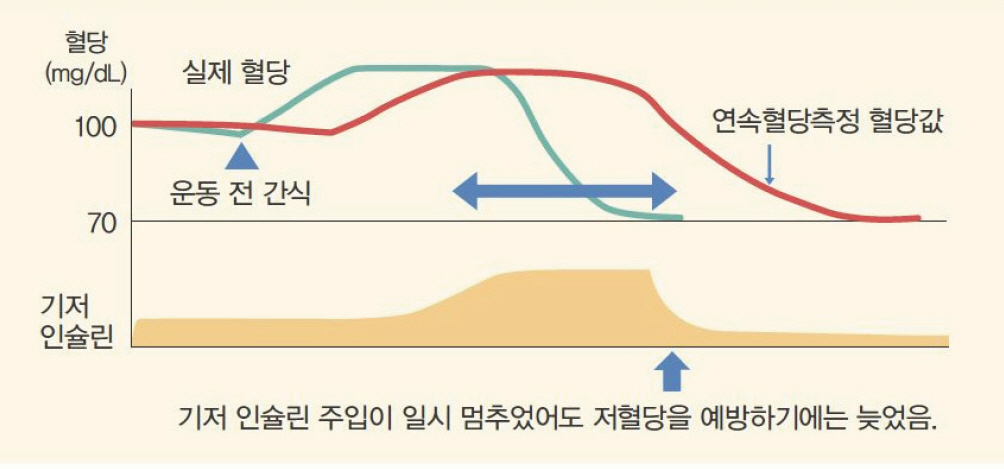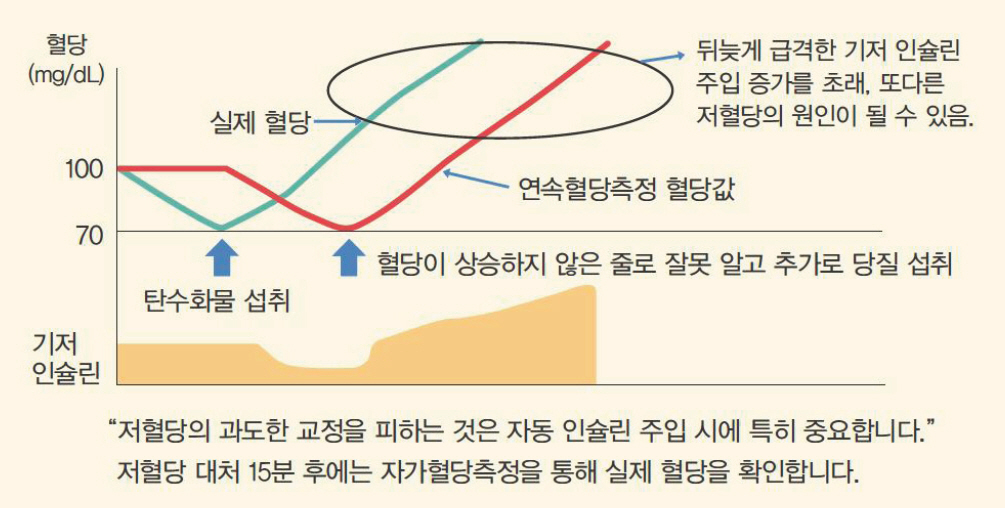J Korean Diabetes.
2022 Dec;23(4):217-221. 10.4093/jkd.2022.23.4.217.
Application of Automated Insulin Delivery in Korean Clinical Practice
- Affiliations
-
- 1Division of Endocrinology and Metabolism, Department of Medicine, Samsung Medical Center, Sungkyunkwan University School of Medicine, Seoul, Korea
- KMID: 2538090
- DOI: http://doi.org/10.4093/jkd.2022.23.4.217
Abstract
- In contrast to Europe and the United States (US), conventional insulin pumps have not been widely used in East Asia, even among people with type 1 diabetes. Clinical experiences in Europe and the US indicate that automated insulin delivery (AID) can successfully improve the quality of glucose control even in people with type 1 diabetes who do not have experience with conventional insulin pumps. Therefore, prior use of a conventional insulin pump was not a requirement for successful introduction of AID. However, use of AID still requires full understanding of conventional insulin pump management, and AID-specific education as well. Besides basic information on continuous glucose monitoring and conventional insulin pumps, people with type 1 diabetes starting AID should understand the difference between closed-loop and open-loop insulin delivery, should have reasonable expectations for AID, and should be motivated to engage in clinical follow-up to prevent discontinuation of the use of AID devices. Failure to provide AID-specific education before and after the introduction of AID would result in discontinuation of the use of AID devices, which would in turn result in suboptimal glucose control. In this review, I summarize lessons from clinical experience where AID is already in clinical use, and discuss what preparations should be made for successful introduction of AID in Korean clinical practice.
Figure
Reference
-
1.Petrovski G., Al Khalaf F., Campbell J., Umer F., Almajaly D., Hamdan M, et al. One-year experience of hybrid closed-loop system in children and adolescents with type 1 diabetes previously treated with multiple daily injections: driv-ers to successful outcomes. Acta Diabetol. 2021. 58:207–13.
Article2.Schoelwer MJ., Kanapka LG., Wadwa RP., Breton MD., Ruedy KJ., Ekhlaspour L, et al. Predictors of time-in-range (70-180 mg/dL) achieved using a closed-loop control system. Diabetes Technol Ther. 2021. 23:475–81.3.Sherr JL., Heinemann L., Fleming GA., Bergenstal RM., Bruttomesso D., Hanaire H, et al. Automated insulin delivery: benefits, challenges, and recommendations. A consensus report of the joint Diabetes Technology Working Group of the European Association for the Study of Diabetes and the American Diabetes Association. diabetes Care. 2022. doi: 10.2337/dci22-0018[Epub ahead of print].
Article4.Slattery D., Amiel SA., Choudhary P. Optimal prandial timing of bolus insulin in diabetes management: a review. Diabet Med. 2018. 35:306–16.
Article5.Diabetes Center, Samsung Medical Center. Starting automated insulin delivery. Seoul: Maru Books;2022. p. 42.
- Full Text Links
- Actions
-
Cited
- CITED
-
- Close
- Share
- Similar articles
-
- 2023 Clinical Practice Guidelines for Diabetes: Continuous Glucose Monitoring and Insulin Pumps
- Clinical Use of New Insulins and New Insulin Delivery Systems
- Critical Insights into the Efficacy and Safety of Automated Insulin Delivery Systems in Patients with Type 1 Diabetes Mellitus (Diabetes Metab J 2025;49:235-51)
- Efficacy and Safety of Automated Insulin Delivery Systems in Patients with Type 1 Diabetes Mellitus: A Systematic Review and Meta-Analysis (Diabetes Metab J 2025;49:235-51)
- Comparing the fully-automated external defibrillator and semi-automated external defibrillator used by laypersons: A simulation study



